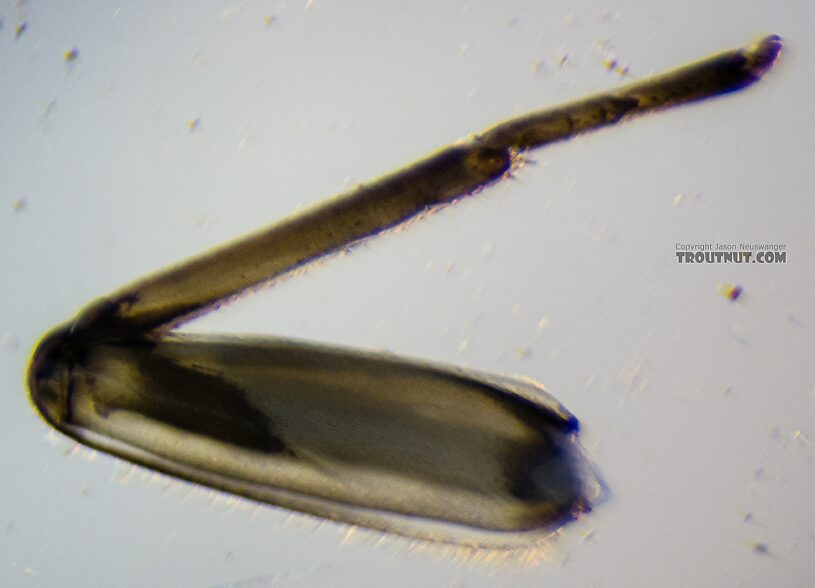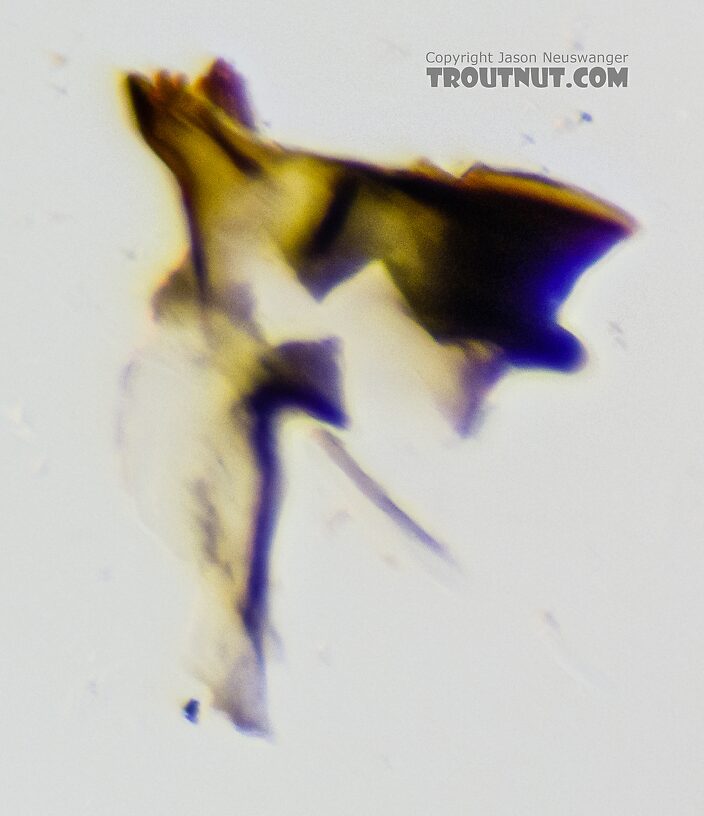Blog & Latest Updates
Fly Fishing Articles
Insects by Common Name


Female Baetis tricaudatus (Blue-Winged Olive) Mayfly Nymph Pictures
Classification
Kingdom
Animalia (Animals)
» Phylum
Arthropoda (Arthropods)
» Class
Insecta (Insects)
» Order
Ephemeroptera (Mayflies)
» Family
Baetidae (Blue-Winged Olives)
» Genus
Baetis (Blue-Winged Olives)
» Species
tricaudatus (Blue-Winged Olive)
These nymphs were highly abundant in my early April kick net samples from the Yakima Canyon, and one of them emerged into a dun, which I photographed immediately. Similar-looking nymphs but with distinctly brighter color patterns were also abundant. I just photographed one. After extensive views under the microscope, it's clear the bright ones are males and the dull ones are females of the same species.
The most likely guess at the species is Baetis tricaudatus, which may be a complex of related species that haven't all been sorted out yet. It isn't a perfect fit to every key characteristic (and I never seem to find a Baetis that matches the expected pronotum (Pronotum: The top of the insect prothorax.) color patterns, but that seems to be the closest.
The microscope images here were taken with different specimens from the main photos (so I could dissect them while preserving that one intact), but clearly the same species.
This mayfly was collected from the Yakima River on April 9th, 2021 and added to Troutnut.com on April 12th, 2021.
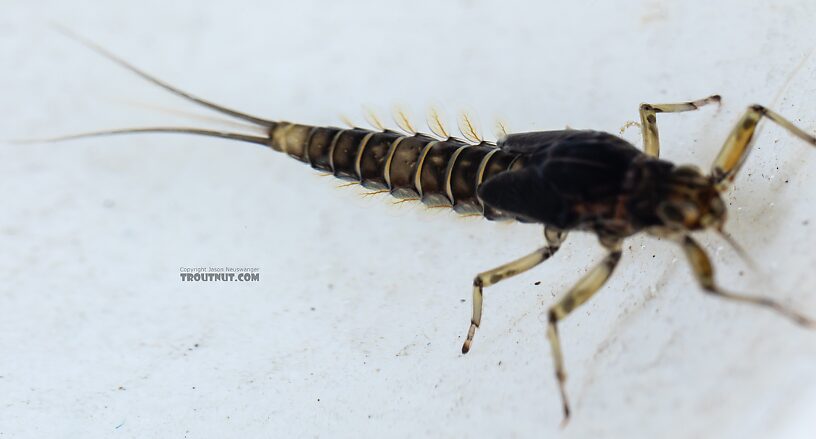
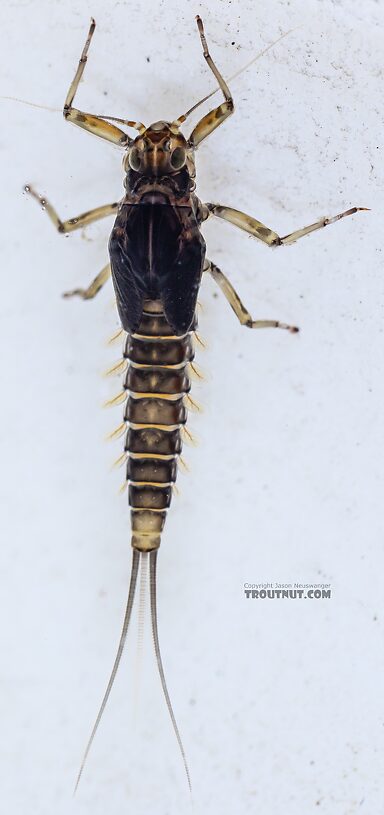
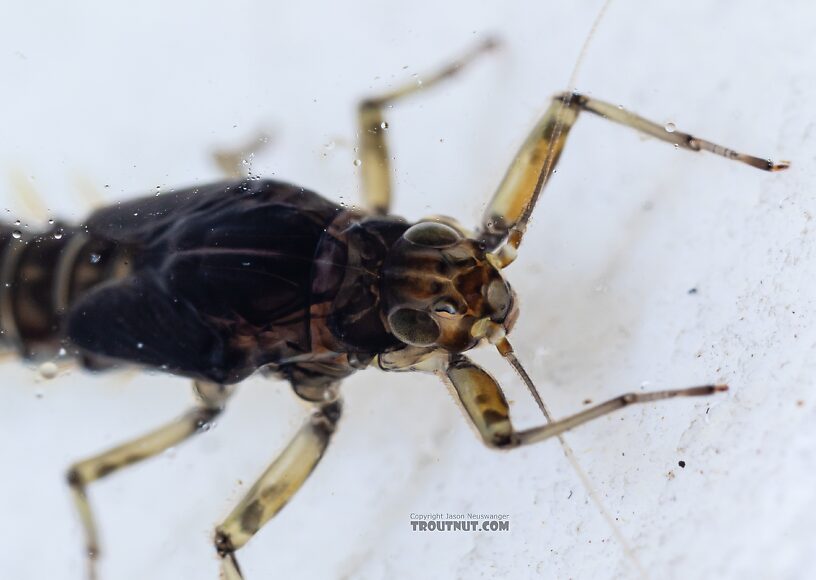
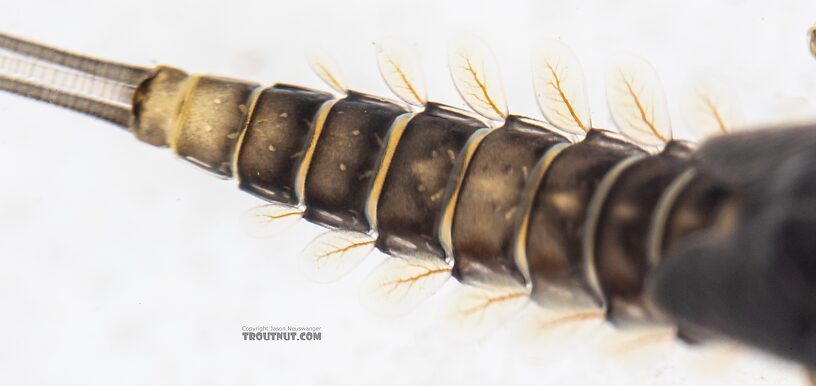
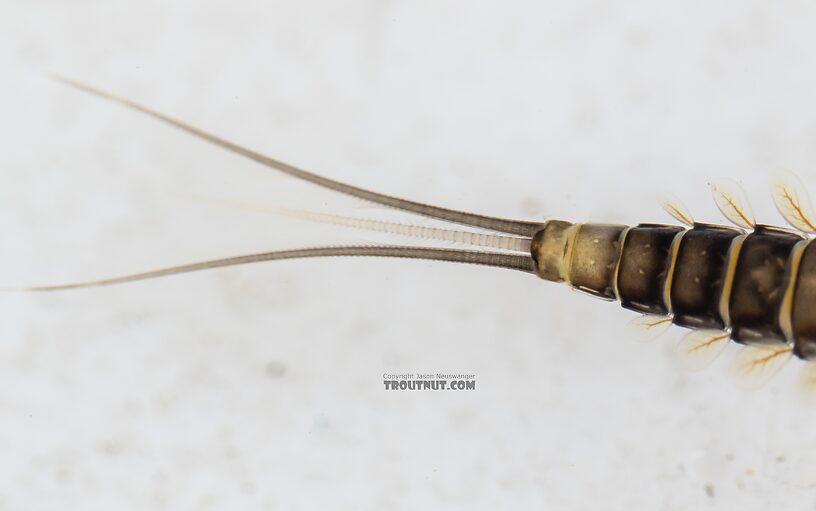
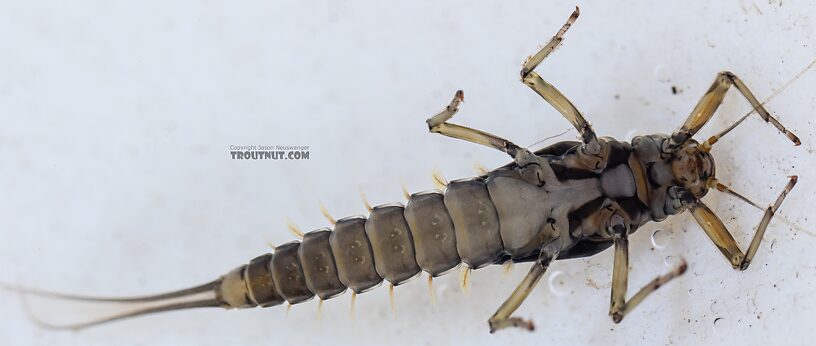
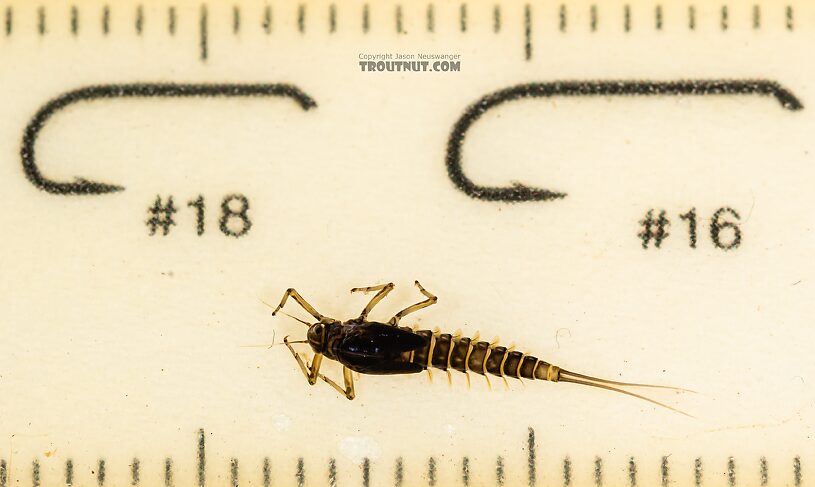
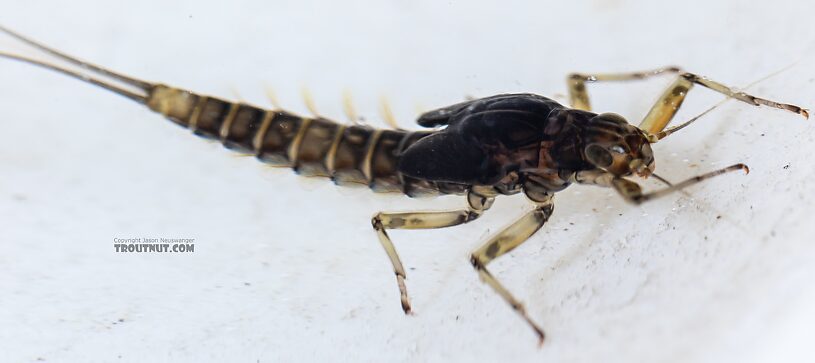
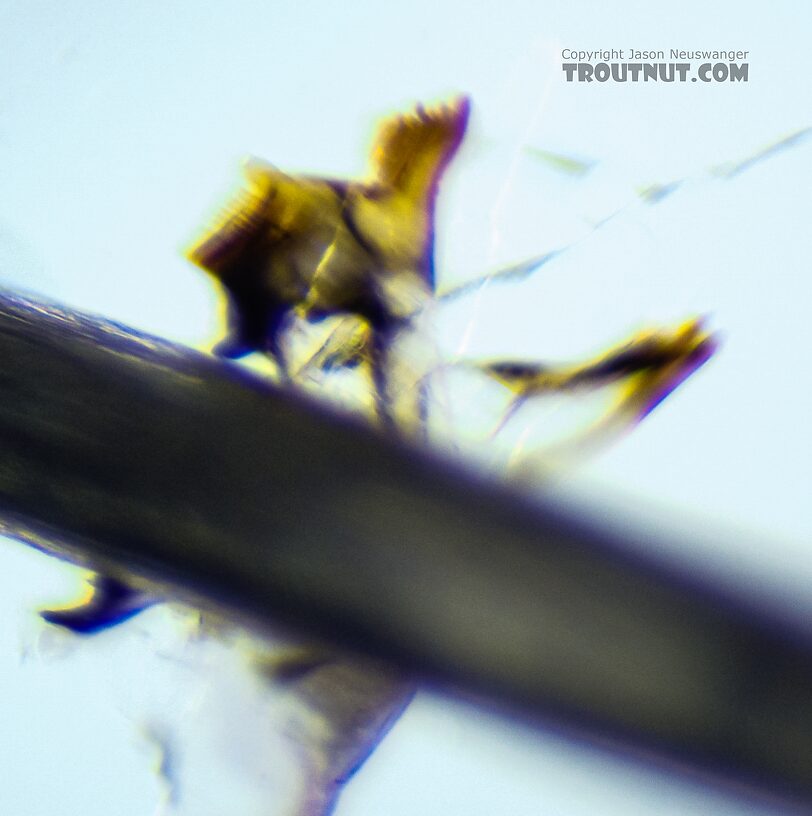
One of the mandibles. The outer incisors aren't fused, indicating this isn't in the Baetis piscatoris complex.
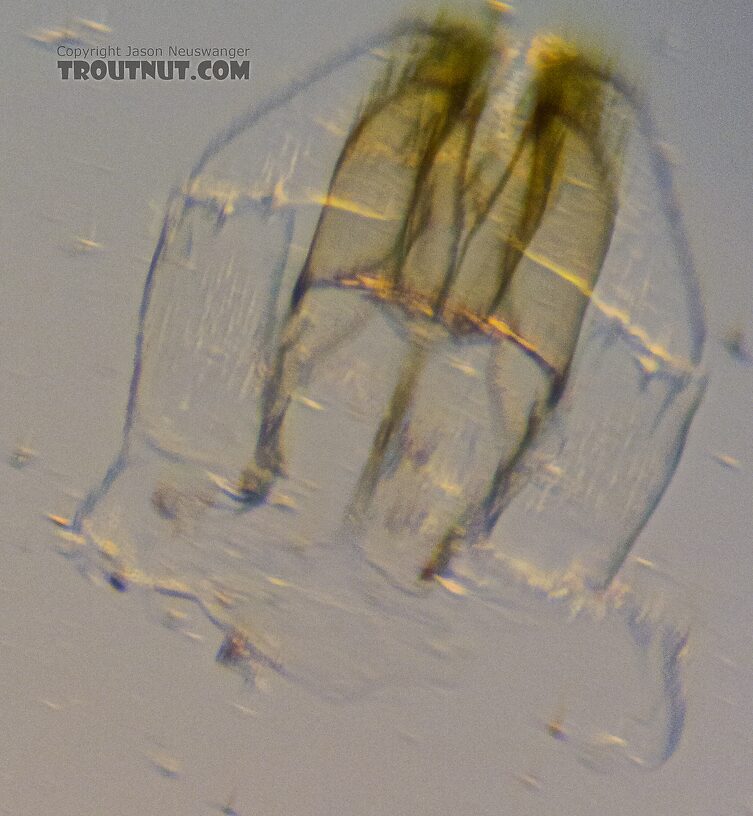
Labium and labial palps removed from the mouth. I think all that's left of the palps is the clear exuvium from a nymph that was perhaps on its way to emerging any minute, but the shape is still pretty evident.
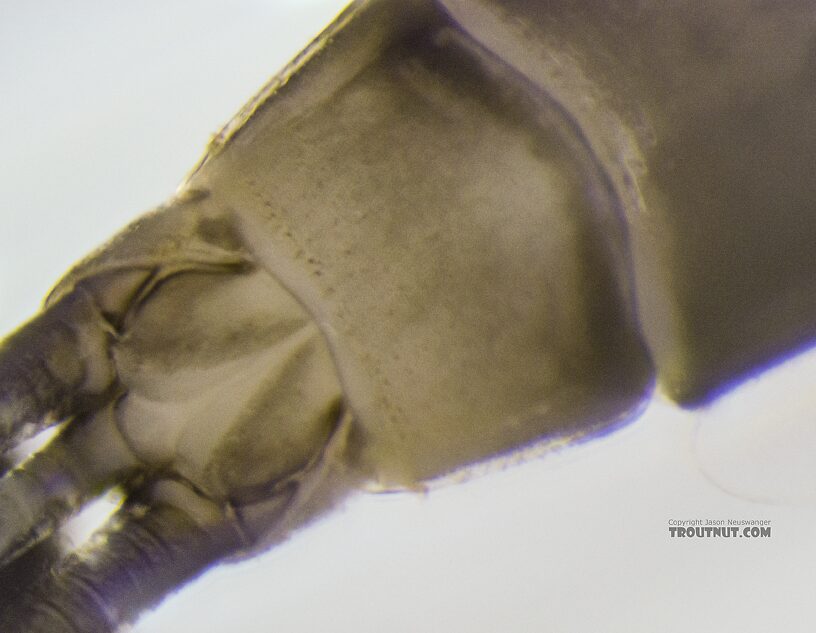
The dark spots along the anterior edge of tergum 10 here seem to be the "stout setae" referenced in the species key.
Start a Discussion of this Nymph:
Top 10 Fly Hatches
Top Gift Shop Designs
Eat mayflies.
Top Insect Specimens
Miscellaneous Sites
Troutnut.com is copyright © 2004-2024 Jason
Neuswanger (email Jason). See my FAQ for information about use of my images.
 privacy policy
privacy policy

